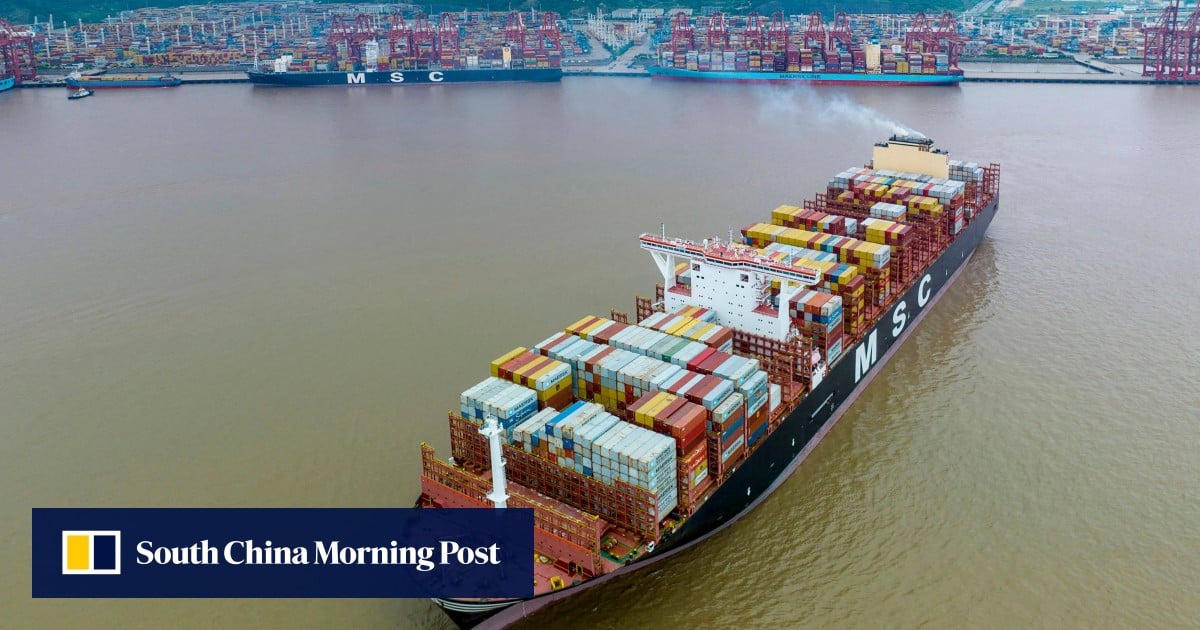
China’s weak exports confirmed the need to rely on domestic demand, said Zhang Zhiwei, president and chief economist at Pinpoint Asset Management, as the global economy slows.
“There is more pressure for the government to boost domestic consumption in the rest of the year, as global demand will likely weaken further in the second half,” he said.
Beijing has pledged to shore up trade to support the overall economic recovery, but China’s exports have struggled due to weak global demand.
The year-on-year fall in China’s shipments to the United States accelerated to 18.24 per cent in May, compared to 6.5 per cent in April, marking the 10th straight month of decline.
Meanwhile, exports to the European Union returned to negative growth by falling 7.03 per cent compared to the same time last year, after two months of brief uptick.
Shipments to the Association of Southeast Asian Nations, which were the major driver of China’s robust headline exports in March and April, fell by 15.92 per cent in May. The 10-nation bloc is China’s largest trade partner.
Trade with Russia, however, remained strong last month, with Chinese exports increasing by 114.32 per cent year on year, although the trading volume between the two countries is much smaller.
Imports, meanwhile, declined by 4.5 per cent in May from a year earlier to US$217.7 billion, narrowing from a fall of 7.9 per cent April.
The decline was largely due to falling commodity import bills, as global energy prices were down 33.9 per cent year on year in May, while global food prices fell 16.3 per cent, according to Lloyd Chan, senior economist at Oxford Economics.
The disappointing economic activity data in April, which included retail sales, industrial production and fixed-asset investment, suggested China’s domestic demand recovery had lost steam following the reopening-induced bounce in the first quarter, he added.
This will continue to constrain Chinese goods import growth. Plus, slowing global demand will weigh on capital goods imports
“This will continue to constrain Chinese goods import growth. Plus, slowing global demand will weigh on capital goods imports,” said Chan.
“We anticipate the [People’s Bank of China] will cut the reserve requirement ratio in the coming months to further spur the domestic recovery.”
Wednesday’s data also confirmed China’s trade surplus fell to US$65.8 billion in May, narrowing from US$90.2 billion in April and US$78.4 billion a year ago.
“Still, the cumulative trade surplus from January-May was US$360 billion, much larger than the same period a year ago (US$281 billion). This should help provide a measure of support for the Chinese yuan,” Chan added.
The yuan’s exchange rate against the US dollar has continued to weaken recently, after falling below a key psychological threshold of 7 per US dollar in May.
Wang Tao, head of Asia economics and chief China economist at UBS Investment Bank, said if China’s growth momentum continues to weaken with disappointing exports, consumption and property activities, Beijing would roll out more positive policies such as boosting infrastructure investment, rolling out targeted consumption support and further easing property policies.
“The upcoming July Politburo meeting is the key time window to watch for policy tone change, while regular State Council meetings in the next two-three months may deliver some details,” Wang said.


